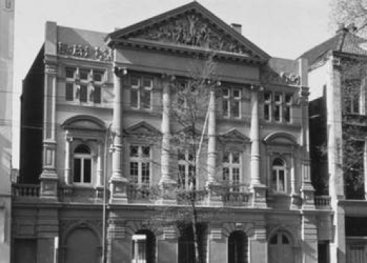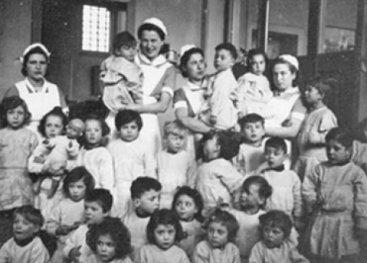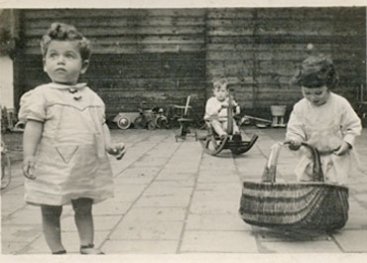
Smuggling
The day care centre was less tightly guarded than the Schouwburg. Even the door was left unguarded from time to time. This made it possible to smuggle children from the building. Babies and toddlers were carried out by the child minders in bags, boxes, suitcases or even rubbish bins. Children were also smuggled out while going on group walks outside the centre.
What I remember is that a man lifted me from my bed late in the evening, put me on his shoulders and walked away with me. At the front door, I saw my uncle. I was so pleased to see a familiar face, that my family had come to rescue me.
Tram and empty classroom
When a tram rode through the street, the guards at the Hollandsche Schouwburg could not see the day care centre. This was when the child minders and child could simply walk out the front door. Next door to the day care centre was a school. The director of the school also helped out. Children were taken via the garden of the day care centre to an empty classroom. They escaped from the school as soon as the coast was clear. Once outside the day care centre, other resistance workers took the children to safety.
 ‘I remember making lots of little holes in a box and putting a baby in it. I took it to the Plantage Parklaan. That was the location of the offices of the Jewish Congregation, which we used as a stopover. That’s where resistance groups picked up the children.’
‘I remember making lots of little holes in a box and putting a baby in it. I took it to the Plantage Parklaan. That was the location of the offices of the Jewish Congregation, which we used as a stopover. That’s where resistance groups picked up the children.’
Virrie Cohen, child carer
 ‘I don’t know how long I was in the day care centre. And I also don’t know how I was taken out. I do know that I was taken to Leeuwarden via a Frisian resistance worker.’
‘I don’t know how long I was in the day care centre. And I also don’t know how I was taken out. I do know that I was taken to Leeuwarden via a Frisian resistance worker.’
Foke Waterman
I was lifted over the fence of the school and handed to a man. He put me in a big gunny sack and carried me away. I still can’t stand the smell of sackcloth.
More stories
 ‘I entered the day care centre as a so-called orphan. The orphans were the easiest to get out, because there were no parents that had to give permission. I was an eight-month-old baby, which made it even easier. Babies couldn’t betray anyone and there was always someone willing to take in a baby. Plus, they were easy to smuggle. You simply put them in a suitcase. That’s how they got me out.’
‘I entered the day care centre as a so-called orphan. The orphans were the easiest to get out, because there were no parents that had to give permission. I was an eight-month-old baby, which made it even easier. Babies couldn’t betray anyone and there was always someone willing to take in a baby. Plus, they were easy to smuggle. You simply put them in a suitcase. That’s how they got me out.’
Max Degen
 ‘When I was 10 days old, my parents and I were betrayed. We were in hiding. My parents were put on a transport, and I was rescued from the day care centre. I was only one month old. A young student, Enny Lim, put me in an empty rubbish bin and carried me out via the school next door.’
‘When I was 10 days old, my parents and I were betrayed. We were in hiding. My parents were put on a transport, and I was rescued from the day care centre. I was only one month old. A young student, Enny Lim, put me in an empty rubbish bin and carried me out via the school next door.’
Benjamin Flesschedrager
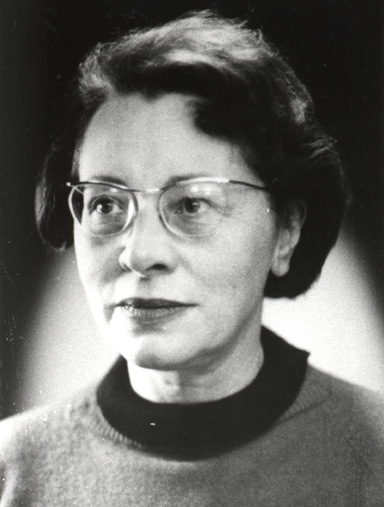 ‘Simply leaving the day care centre with children was difficult because there were always guards outside the front door of the former theatre Hollandsche Schouwburg across the street. When tram line 9 came, we would walk out the door, each with a baby under our arm. We ran alongside the tram and would get on at the next stop, gasping for breath.’
‘Simply leaving the day care centre with children was difficult because there were always guards outside the front door of the former theatre Hollandsche Schouwburg across the street. When tram line 9 came, we would walk out the door, each with a baby under our arm. We ran alongside the tram and would get on at the next stop, gasping for breath.’
Semmy Woortman, resistance worker
 ‘When I arrived at the day care centre aged 15, they said they would get me out as soon as possible. But nothing happened. I just sat and waited. After a week I couldn’t wait any longer. I couldn’t face the idea of having to escape and run again, like I had already done several times. I wanted to be with my parents. So I decided to go to them. I just walked out of the day care centre and joined a transport to Camp Westerbork.’
‘When I arrived at the day care centre aged 15, they said they would get me out as soon as possible. But nothing happened. I just sat and waited. After a week I couldn’t wait any longer. I couldn’t face the idea of having to escape and run again, like I had already done several times. I wanted to be with my parents. So I decided to go to them. I just walked out of the day care centre and joined a transport to Camp Westerbork.’
Ted Musaph-Andriesse
 ‘I remember the day the day care centre was evacuated very well. I was 16. I had hidden in the attic. That final day, I saw everything through the grates in the ceiling of the baby room; how the entire day care centre was evacuated. The next day, when it was all over, I finally plucked up the courage to come out. I was taken to the house of the Lewin family on Plantage Parklaan. That was one of the hiding places used regularly to temporarily take care of children who had been smuggled out.’
‘I remember the day the day care centre was evacuated very well. I was 16. I had hidden in the attic. That final day, I saw everything through the grates in the ceiling of the baby room; how the entire day care centre was evacuated. The next day, when it was all over, I finally plucked up the courage to come out. I was taken to the house of the Lewin family on Plantage Parklaan. That was one of the hiding places used regularly to temporarily take care of children who had been smuggled out.’
Sal Kool
 ‘One day, my sister and I had to go to the principal. She said: “You will be picked up tomorrow, the day after or the day after that. First one, then the other. Say goodbye now, because you won’t see each other for a while.” My sister was picked up first. My turn came a week later. I had to walk into the garden and keep walking into the school. There was a man waiting there for me. He said: “Stay calm. We’re going outside now and if anybody asks anything, I’ll do the talking.”’
‘One day, my sister and I had to go to the principal. She said: “You will be picked up tomorrow, the day after or the day after that. First one, then the other. Say goodbye now, because you won’t see each other for a while.” My sister was picked up first. My turn came a week later. I had to walk into the garden and keep walking into the school. There was a man waiting there for me. He said: “Stay calm. We’re going outside now and if anybody asks anything, I’ll do the talking.”’
Levi Hagenaar
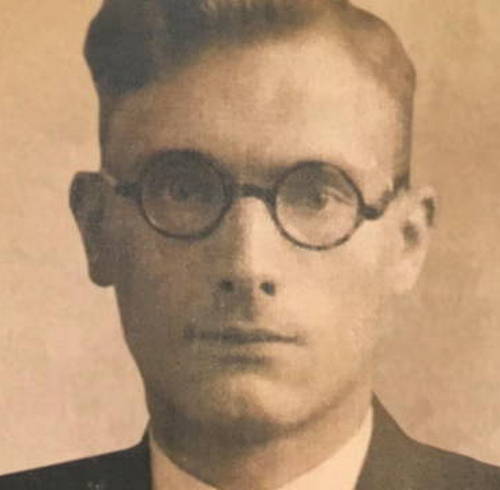 ‘The principal of the day care centre asked me, as her neighbour, whether she could use the school because the day care centre was getting so full. I made an empty classroom and part of the garden available. These soon became escape routes for the children. Many children were smuggled out via the school. Resistance workers could walk in and out quite freely, because the Germans paid no attention to the school. Perhaps that was because I deliberately pretended I didn’t want anything to do with the Schouwburg or the Jews.’
‘The principal of the day care centre asked me, as her neighbour, whether she could use the school because the day care centre was getting so full. I made an empty classroom and part of the garden available. These soon became escape routes for the children. Many children were smuggled out via the school. Resistance workers could walk in and out quite freely, because the Germans paid no attention to the school. Perhaps that was because I deliberately pretended I didn’t want anything to do with the Schouwburg or the Jews.’
Johan van Hulst, school principal
I was flirting with the German guards, while at the same time carrying a baby in a big bag. Simply in a travel bag. That’s how I would walk out of the front door of the day care.
